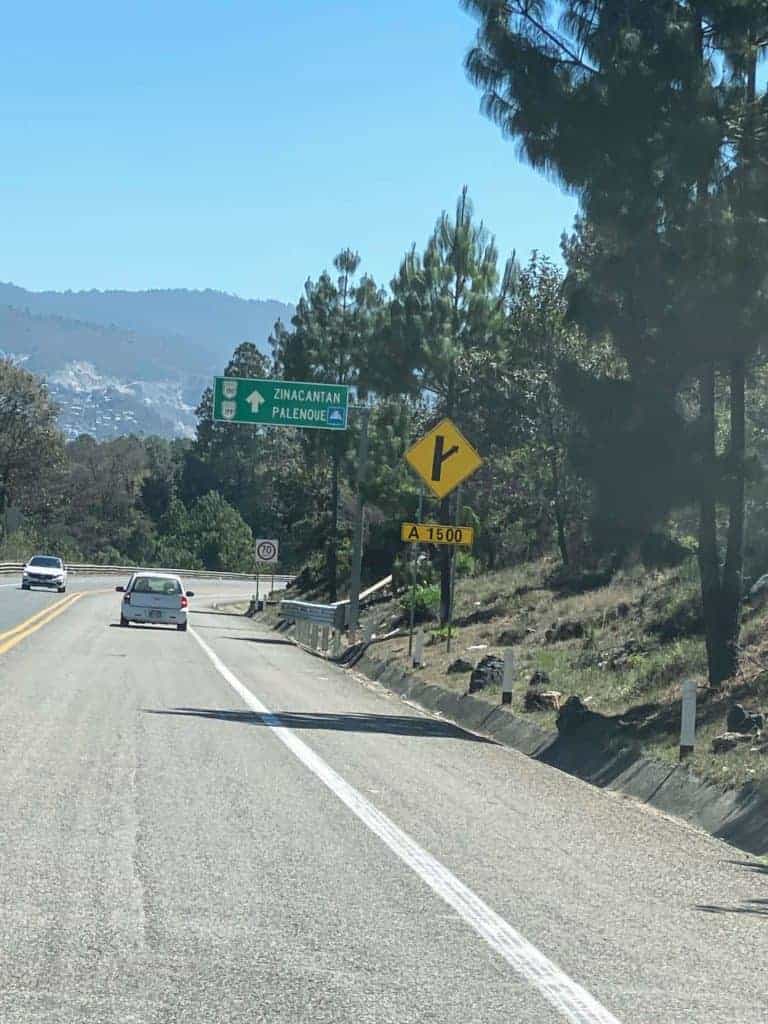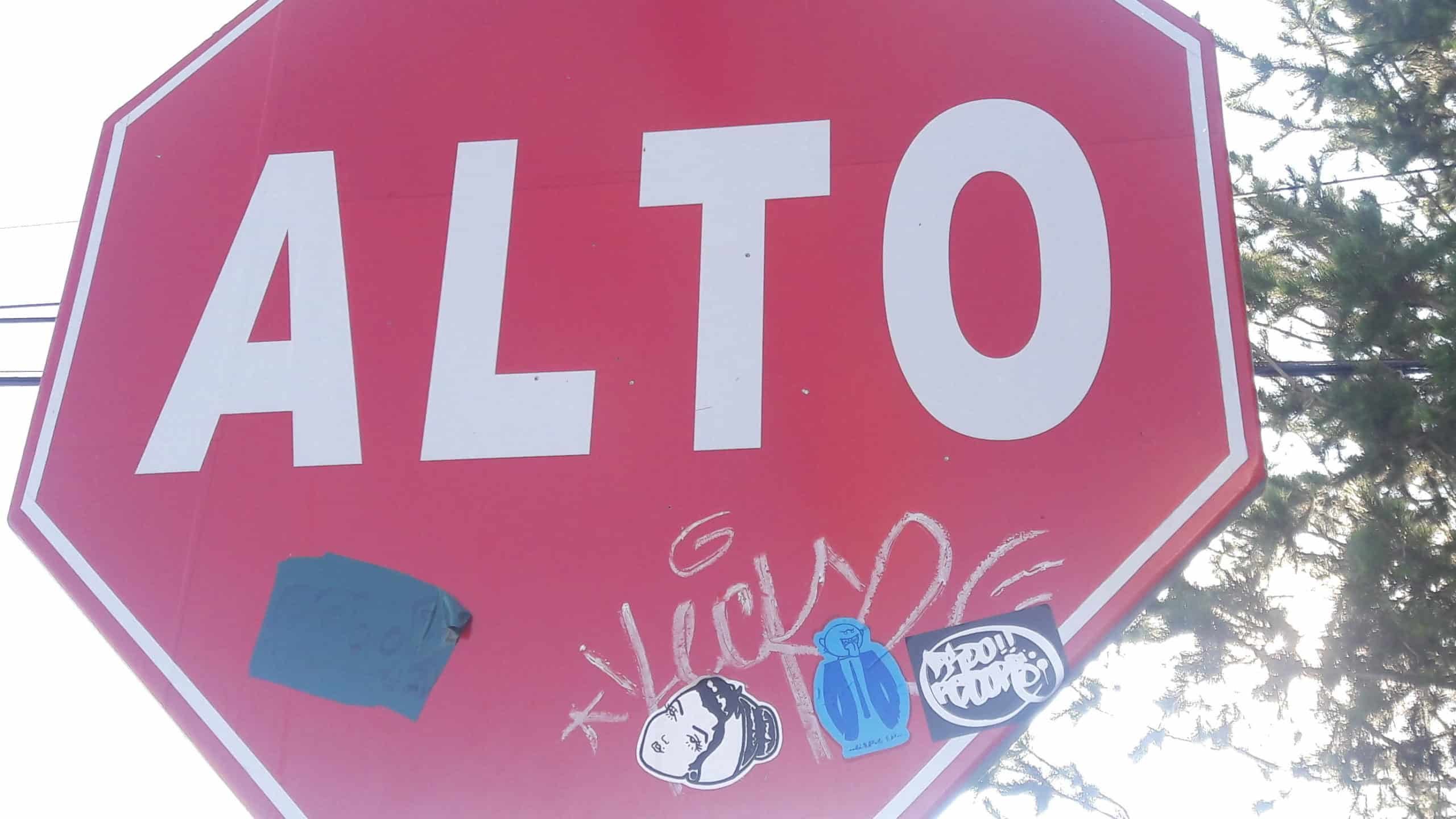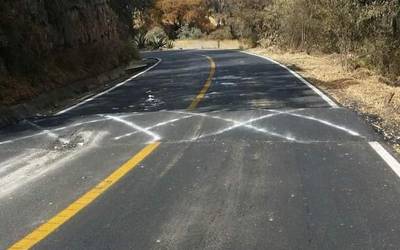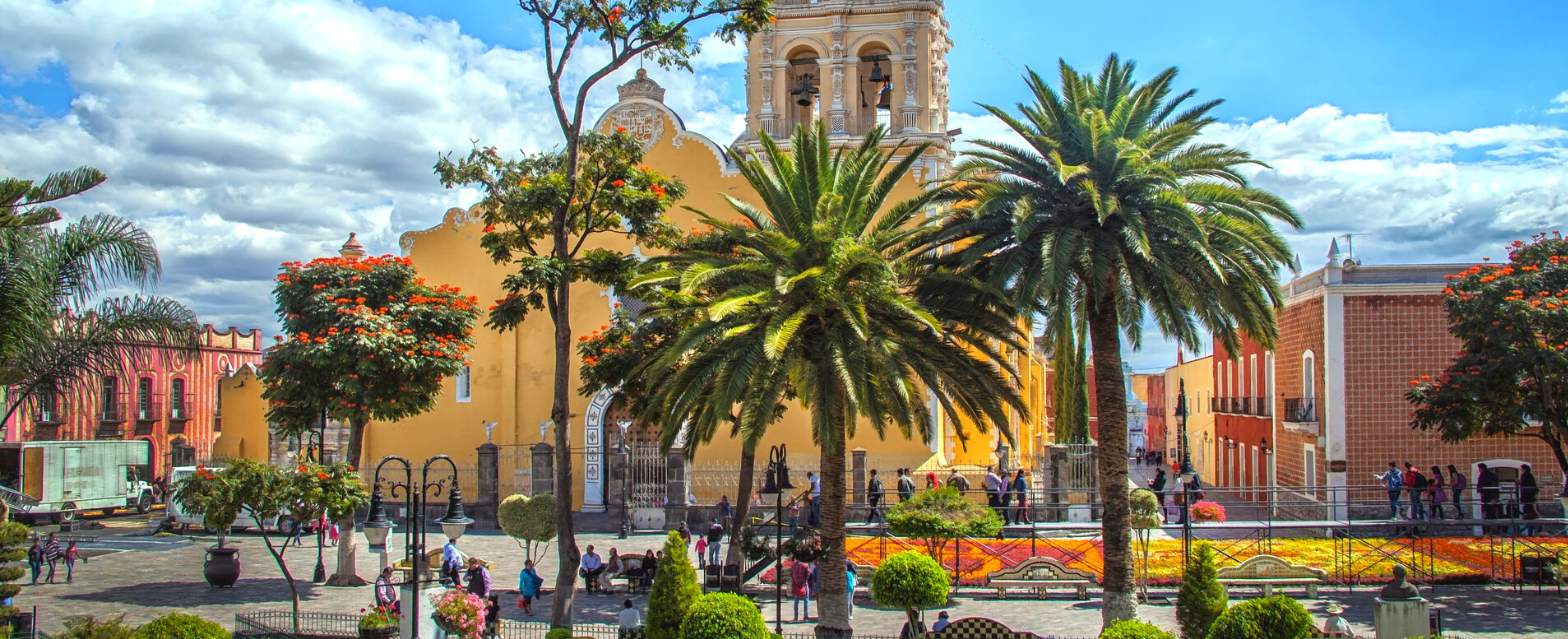One of the greatest advantages of living in Mexico is its proximity to the U.S. and Canada, making driving in Mexico attractive.
There are great highways that connect the entire North American continent.
You may decide to have your own car in Mexico because it gives you freedom and flexibility. You’ll be able to go wherever you want at whatever time you want. You can haul big items like furniture. And having your own vehicle also means you get to visit places that some cab drivers or rideshares won’t want to take you to, like a far-away beach that isn’t in a tourist zone.
There are many advantages to having your own car.
But driving in Mexico is very different than anywhere else you’re used to. There are certain unspoken laws that you won’t find written anywhere. And those who don’t follow them are typically the ones who get into an accident. These aren’t meant to scare you but to educate you so you can always be a step ahead.
So here are some of our top tips for driving in Mexico. Whether you’re crossing the border for the first time, or you’ve been driving in Mexico for years.
Distances and Measurements Driving in Mexico
Speed and Distance are in Kilometers.
- 1 kilometer = more than 1⁄2 a mile.
- For example, 50 km is 30 miles.
- If you are driving 80 Mp/h, you’d be driving 130 Km/h on your dashboard.
Gasoline is sold by the Liter.
- 1 liter = a little more than a 1⁄4 gallon.
- Another way to look at it is 1 gallon= almost 4 liters.
- For example, my mid-sized Nissan SUV can hold up to 65 liters, about 17 gallons.
It’s a good idea to calculate how many liters your tank can hold ahead of time. That way, when you get to a gas station in Mexico, you can watch the gas marker and make sure that the correct amount of liters was added to your car and avoid being the victim of a gas pump scam.
Learn How to Move to Mexico and Have a Better Life for Less! Check out our Complete Mexico Relocation Guide.
Driving on Highways in Mexico
When driving on a two-lane highway, there will usually be a shoulder. You may think this shoulder is for people who have car trouble or need to stop on a highway. But the shoulder on a highway in Mexico isn’t only used for stopping or car trouble. The shoulder acts kind of like a 3rd lane.

You are expected to drive on the shoulder if you are not passing someone. If someone wants to pass you, please drive on the shoulder until they do. If you don’t, you run the risk of someone tailgating you and can cause an accident if you have to stop suddenly.
You’ll have to access the highway you’re on, but no matter where you are in Mexico, the shoulder of a highway is almost always used for slower-driving cars. The other two lanes are used for faster-driving vehicles and as passing lanes.
Someone Signaling Left
If a car in front of you starts to signal left on a straight road, this usually means they’re letting you pass.
Most drivers in Mexico don’t use their signals, and if someone is signaling left, they aren’t normally telling you they’re turning left. They’re most likely letting you know you can pass them. This is especially true on highways where you can pass on the left.
Please DO NOT turn on your left signal on a highway if you intend to switch lanes because you are sending a message to the car behind you that it’s okay for them to pass. And you run the risk of having them run into your car.
Stop Signs Are Yield Signs
This one right here is where most accidents happen for newcomers in Mexico.
You’re used to following the law, and when you see a stop sign, you’re used to making a complete stop. In Mexico, making a complete stop at a stop sign (or a sign that says “ALTO”) without oncoming traffic can lead to an accident.
Mexicans use stop signs as yield signs. If no one is coming, no one makes a complete stop. If you happen to make a complete stop and the person behind you isn’t paying attention, they can run into you.
So, remember, the stop signs in Mexico are a suggestion. Only make a complete stop if you are merging onto a busy street with a lot of traffic.

Shifting Lanes Without Notice
In cities with 2 or 3-lane avenues, it is not uncommon for a motorcycle or car to want to make a left turn from the far right lane.
In Mexico, it’s very important that you not be distracted because when someone tries to pull a maneuver like this one, you have to be ready to stop and not t-bone them.
Speed Bumps Are TALL

One of the first things you may notice when driving in Mexico is the random placement of speedbumps and their large sizes.
You’ll usually find these in certain neighborhoods, street avenues or busy roads, and even inside parking lots. These are meant to slow you down, but sometimes they aren’t obvious.

If you’re driving down a free highway, aka “carretera” you are likely to see these throughout your journey. This is one of the main advantages of taking a toll road vs a “libre” or free road.
Free highways in Mexico have “topes” scattered all over the place. Sometimes they have markers like the example above, and sometimes they don’t.
This is one of the main reasons people warn you against driving at night. You could get going to 60-70 miles an hour, and hitting one of these things without slowing down can seriously damage your car or cause you to lose control.
If you are driving on a “cuota” or paid toll highway, these are very rare. However, you should still be cautious since these topes can vary much in size. Some seem so tall they can easily rub the bottom of your car if you have a low vehicle.
FREE MOVING TO MEXICO CHEAT SHEET
Buy A Pase Toll Pass
Pase is a sticker or device you can get that the toll road readers scan and automatically charge you as long as you have a balance. They sell them at Oxxo and other gas stations. I’d recommend adding at least $2000 pesos to your Pase at a time.
One thing worth noting is that without a Mexican phone number, you will have to recharge with cash at an OXXO or gas station along the highway. When you buy it, download the PASE app and tie the app to the card. Then, you can see your charges and remaining balance.
However, we still recommend carrying cash since it is common for toll booths not to accept Pase or for their scanners to be out of order. We recommend carrying about $2,000 pesos at a time if you’re driving a long distance and have to go through several booths.
If you’re driving a long distance or through many different states, this is a good app that calculates the toll roads from point A and point B in Mexico.
I also recommend taking tolls from point A to point B. This is the fastest way to get through your journey, and toll roads have insurance when you pay the toll pass. This means that if you break down, you can call the “Angeles Verdes,” and they will aid you in case of a gas emergency or your car breaking down. All toll roads in Mexico are numbers followed by the letter D. For example 85D
Look for “Love Motels” on the Highway.
Many of you will carry a carload full of things when moving to Mexico; you may be worried about leaving your car packed full of things out in the open.
That’s why I recommend Love Motels. They all have secure garages. And they are usually very secure themselves. These hotels are rented by the hour for couples who may not have the privacy they need at home. And they are perfect for people traveling because their garages are fully enclosed.
A lot of them are pet-friendly.
Don’t Drive at Night
You may hear people say don’t drive at night on the highways. And for the most part, I agree with them.
However, this is not because it’s any more dangerous at night. Criminals aren’t what you need to watch out for. Rather, it’s livestock in the middle of a road with poor lighting that may be dangerous. Or the “tope” you didn’t see ahead of time and hit while driving 50-60 miles an hour.
If you’re in a city, driving at night is perfectly fine. But once you get on the highway, avoid driving at night.
Drive On Weekdays
If you’re anything like me, you hate being stuck in traffic, especially on a highway with few amenities nearby.
That’s why I recommend driving during the morning and the week and avoiding the weekends or rush hour. And the weekend in Mexico starts on Friday for many office workers. So it’s best to stick to a Monday- Thursday morning schedule.
Plus, driving during the week and the day is also the safest time to be on the road. And speaking of safety, it’s no secret that Mexico is known for having cartel crime and cartel activity. This is usually concentrated in the border towns between Texas and Mexico. If you have to cross between Texas and Mexico, we recommend crossing in Laredo and north from there. You’ll end up taking the carretera 85D and skipping Reynosa or Matamoros.
Refuel Often On Long Trips
There are stretches of highway in Mexico where you may not see a gas station for miles.
That’s why we recommend refueling when you’re at half a gas tank.
It’s also a good idea to stop and stretch your legs often to avoid fatigue. Most bathrooms are highway gas stations are free, although they may have a tip jar for the cleaning team.
Facebook Groups I Recommend Joining
OnTheRoadIn.com
Bill Bell has lived in Mexico for over 20 years and has been helping expats from all over the USA and Canada make a safe journey to Mexico through land crossings.
His website has a variety of resources, including the best RV parks, recommended hotels, and more.
On The Road in Mexico FB Page
Thankfully, a great Facebook page is a great resource where others share which border crossings to avoid. Follow On The Road In Mexico- This group is a fantastic resource for anyone planning a road trip in Mexico, as participants regularly share updates about their recent routes, personal driving experiences, and even tips for safe travel. It’s especially helpful for staying informed about current road conditions, potential hazards, or areas to avoid, ensuring a safer and more enjoyable journey.
Now, this isn’t meant to scare you. Most people who cross the border never encounter any of these crimes. But I want you to know what to look out for and other tips to help you avoid headaches.
Travel Buddies on The Road In Mexico
This Facebook Group is for those who want to find a travel buddy when driving to Mexico. Or it could be used to caravan together on your journey driving to Mexico.
Bonus Tips When Driving in Mexico
Having Mexican Auto Insurance is mandatory in México. And no, your foreign insurance does not cover you in México. If you are in an accident and do not have Mexican auto insurance, you can be jailed until the accident investigation concludes. This is especially true if someone else is hurt. If you need a recommendation for auto insurance companies in Mexico, check out our COMPLETE Mexico Relocation Guide.
Double-check everything at the border. Your FMM stamps, your TIP (temporary import permit) and everything done at the border. Border agents can make mistakes all the time.
Bring some bottled water and some Kleenex or toilet paper in your car. And many bathrooms are public, and they ask for a small tip to ensure their attendants keep them clean. So, having a hand full of 5-10 peso coins for bathrooms is a good idea.
Google or Waze isn’t always right. So plan for delays. There are a lot of dead zones in Mexico for satellite/internet coverage. So, planning your route ahead of time is a good idea to avoid getting lost. It’s probably a good idea to print out your directions beforehand.
Make it a point to stop along the way. Plan for some overnight stays in the various towns you’ll pass. Mexico is a beautiful country with a lot of charming towns scattered everywhere.
Don’t rely on brake lights. I’ve seen several cars on the highway slowing down or even stopping whose brake lights didn’t work. Best to keep your distance and NEVER BE DISTRACTED.
Want Someone Else to Drive You to México?
We get emails all the time from people just like you who feel intimidated driving to Mexico for the first time. And I fully understand the sentiment.
There are unwritten road rules, all the signs are in Español, you might not know which places to stop for the night, or if you are bringing pets, it may be nerve-wracking thinking about the process of bringing them down to Mexico.
That’s why we have a list of recommended private drivers that can meet you in the U.S. or Canada and help you drive down to Mexico.
To get access to our complete directory of contacts, you first have to purchase the Complete Mexico Relocation Guide. Find out what’s included here
Have a wonderful and safe drive! Vroom vroom!





